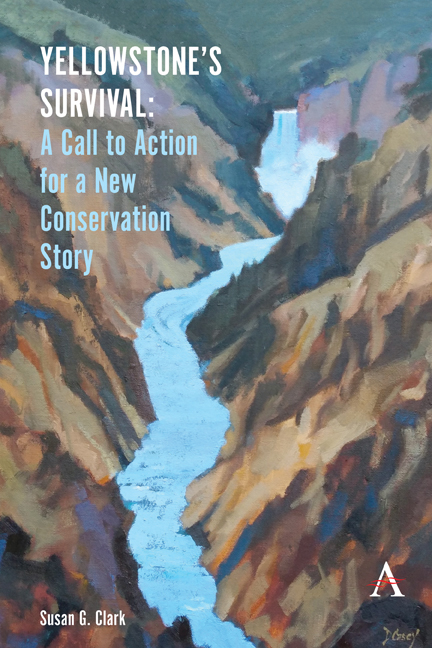 Yellowstone's Survival - A Call to Action for a New Conservation Story
Yellowstone's Survival - A Call to Action for a New Conservation Story Published online by Cambridge University Press: 22 May 2021
Compromise is a difficult thing to find in Teton County
[…] there's so much money at stake.
The Teton Mountains, which lie in the heart of the GYE, are one of the most widely recognized mountain ranges in the world. The glaciers that sculpted the mountains over their four million years ago largely disappeared around ten thousand years before the present, though some glacial ice and snow remain year-round in the heads of glacial troughs and are visible from the highway in Jackson Hole. Due to the rapidly changing weather and climate, these glacial remnants are disappearing quickly, as are the glaciers in the Wind River and Absaroka Ranges in Wyoming and Montana. Retreating glaciers are just one example of the effects of climate change on the ecology of the GYE. For humans and animals alike, big change is on the wind.
Humans are a very recent species in a very old landscape, yet currently, we are agents of dramatic change, and not only in the GYE. Homo sapiens is now a planetary force, and the impacts of human activity can be found in most planetary systems. Our widespread use of ammonium fertilizer, for example, has dramatically altered the global nitrogen cycle, and humans have transformed 75 percent of Earth's surface. In recognition of the profound impact that human beings have on our planet, scholars have introduced the term “Anthropocene” to describe our current geologic epoch. Unfortunately, many of our impacts are negative and uncontained. We are losing species and ecosystems at rate almost one thousand times the background rate. Tom Butler of the Northeast Wilderness Trust noted in his 2005 book Overdevelopment, Overpopulation, Overshoot, “The wild beauty, ecological richness, and cultural diversity [is] being swept away by the rising tide of humanity.” The Greater Yellowstone Ecosystem is not immune.
This chapter focuses on challenges that we face “out there” in the environment and “in here” in our minds, thoughts, and meaning making. It offers a three-part, interconnected problem definition— conventional, systemic, and cultural— and offers pragmatic options to address these challenges. We must focus on understanding problems first, before we can find solutions to them.
Greater Yellowstone for Tomorrow
The Greater Yellowstone Ecosystem is a value-laden cultural icon in which many people have a stake. As such, the GYE provokes veneration, confusion, and political conflict. So, what is GYE's future?
To save this book to your Kindle, first ensure no-reply@cambridge.org is added to your Approved Personal Document E-mail List under your Personal Document Settings on the Manage Your Content and Devices page of your Amazon account. Then enter the ‘name’ part of your Kindle email address below. Find out more about saving to your Kindle.
Note you can select to save to either the @free.kindle.com or @kindle.com variations. ‘@free.kindle.com’ emails are free but can only be saved to your device when it is connected to wi-fi. ‘@kindle.com’ emails can be delivered even when you are not connected to wi-fi, but note that service fees apply.
Find out more about the Kindle Personal Document Service.
To save content items to your account, please confirm that you agree to abide by our usage policies. If this is the first time you use this feature, you will be asked to authorise Cambridge Core to connect with your account. Find out more about saving content to Dropbox.
To save content items to your account, please confirm that you agree to abide by our usage policies. If this is the first time you use this feature, you will be asked to authorise Cambridge Core to connect with your account. Find out more about saving content to Google Drive.